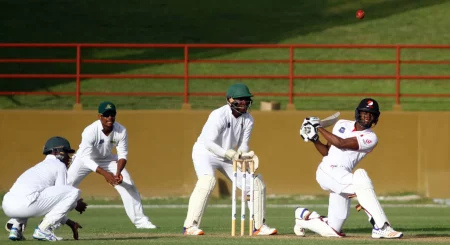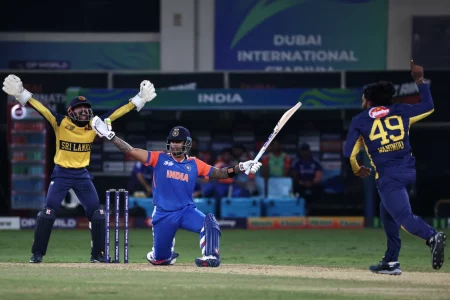In addition to the changes to the playing conditions by the ICC, the Marylebone Cricket Club (MCC) has also tweaked the boundary catch law. The regulation, which has until now allowed fielders to legally tap the ball multiple times outside the boundary provided they weren’t grounded beyond the line, will now tighten that leeway.
Implemented from later this month, as per the ICC’s updated playing conditions, such catches will no longer be valid under the new rule. An airborne fielder outside the boundary rope will be allowed to touch the ball only once, that too while in the air. The second contact with the ball must take place once the fielder is completely inside the circle for the catch to be valid. Any second contact while in the air outside the boundary will result in a boundary.
“MCC has devised a new wording where the ‘bunny hop’ wholly beyond the boundary is removed, but these catches where the fielder pushes the ball up from inside the boundary, steps outside and then dives back in to catch the ball, are permitted.
Our solution has been to limit any fielder who has gone outside the boundary to touching the ball while airborne only once, and then, having done so, to be wholly grounded within the boundary for the rest of the duration of that delivery.”
Interestingly, during the Big Bash League in 2023, the ‘bunny hop’ was witnessed on a global stage for the first time. It occurred when Michael Neser pulled off a highly debated boundary catch while fielding for Brisbane Heat. Neser, while tracking a lofted drive from Sydney Sixers’ Jordan Silk at wide long-off, caught the ball with both hands but stumbled towards the rope. He then threw the ball in the air before crossing the line and landing beyond the rope. Once outside the boundary line, he jumped to tap the ball back inside, then hopped to continue the catch. Silk was ruled out and walked back, looking part-dismissed and part-bewildered.
With this rule, relay catches, which involve two fielders, have also been affected. If the first fielder who initiates the relay jumps from outside the boundary and taps the ball to the second fielder on the other side of the boundary line, they must jump inside the boundary before any further contact with the ball or the ground. Otherwise, the batting side will be awarded a boundary regardless of what follows.
“Even if the ball is parried – to another fielder or inside the field of play – if the fielder lands outside the boundary, or subsequently steps outside, then a boundary will be scored. For clarity, that means the fielder gets one chance, and one chance only, to touch the ball having jumped from outside the boundary. After that point, the boundary becomes a hard line, and any time they touch the ground in that delivery, whatever else happens, they must be inside.”
The ICC playing condition will come into effect from June 17, which also marks the start of the new World Test Championship (WTC) cycle. However, the full MCC law will be implemented globally, including domestic and grassroots competitions, from October 2026, when the next law review cycle starts. This means franchise leagues will follow the previous rules until October next year.



